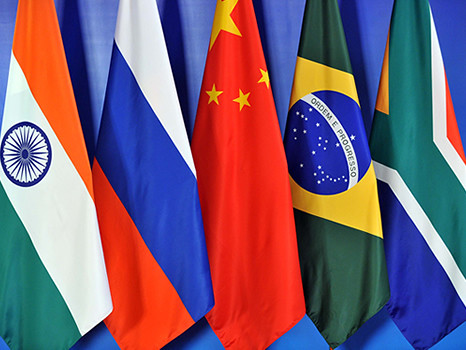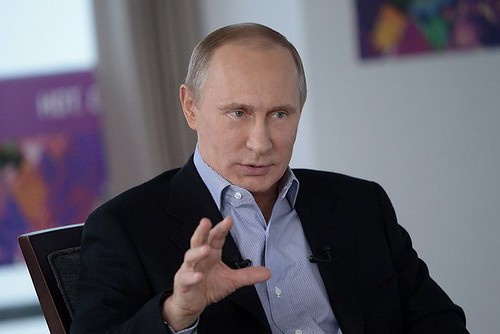Main Points:
- President Putin revealed the potential role of digital currencies, including Bitcoin (BTC) and Ripple (XRP), in BRICS nations.
- BRICS is considering adopting digital currencies to reduce reliance on Western financial systems.
- The adoption of digital currencies by BRICS countries is seen as a strategic move to strengthen economic independence.
- BRICS is moving forward with initiatives, including launching cryptocurrency exchanges and stablecoins.
- Several BRICS members, including Russia and China, are already exploring the use of central bank digital currencies (CBDCs).
Putin’s Vision for Digital Currency Adoption in BRICS
On October 19, 2024, during a business forum in Moscow, Russian President Vladimir Putin unveiled his perspective on the role of digital currencies in BRICS (Brazil, Russia, India, China, South Africa). Amid speculations about Bitcoin (BTC) and Ripple (XRP), Putin highlighted how digital currencies could offer significant benefits to BRICS and other developing nations. His statement reinforced the growing consensus that digital currencies could play a pivotal role in reshaping the global financial landscape.
BRICS’ Shift Towards Digital Currencies
As BRICS seeks to reduce its dependency on Western financial systems, the adoption of digital currencies is emerging as a key solution. President Putin emphasized that BRICS countries could explore the use of digital currencies as part of their payment systems. This shift would allow them to bypass traditional banking networks dominated by the U.S. dollar, thereby enhancing economic sovereignty.

Bitcoin and XRP’s Role in BRICS
Although many expected Bitcoin (BTC) and Ripple (XRP) to become central to BRICS’ financial infrastructure, Putin clarified that it was too early to discuss the creation of a single currency for the bloc. This statement tempered the expectations of cryptocurrency advocates but did not diminish the possibility of these assets playing a significant role in BRICS’ future. According to Putin, integrating alternative asset classes like BTC and XRP could benefit the bloc’s financial systems by providing a secure and efficient means of transferring value.
Moving Away from the Dollar: BRICS’ Broader Strategy
A critical component of BRICS’ economic strategy is to transition away from the U.S. dollar. By exploring digital currency integration, BRICS nations are considering multiple options to diversify their payment mechanisms. The goal is to establish a financial network independent of Western influences. While the timeline for digital currency adoption remains unclear, the discussions signal that BRICS is determined to push forward with this strategy.
The Push for Alternative Payment Systems
BRICS has been advancing its initiatives to develop alternative payment systems. In August 2024, BRICS announced plans to launch two cryptocurrency exchanges and a stablecoin to facilitate cross-border trade within the bloc. These efforts align with the broader goal of reducing reliance on Western financial institutions, providing BRICS members with more control over their economic transactions.
Growth of the BRICS Bloc and International Interest
The BRICS alliance has expanded rapidly, with new countries expressing interest in joining. Turkey announced its intention to join the group in June 2024, followed by Egypt, Ethiopia, Iran, and the United Arab Emirates. This expansion reflects the growing appeal of BRICS as an economic powerhouse, particularly as it explores innovative technologies like blockchain and digital currencies.
Increasing Adoption of Cryptocurrencies Globally
The growing adoption of cryptocurrencies is not limited to BRICS. Globally, the use of digital money is increasing as more countries look to bypass traditional banking systems. Cryptocurrencies, particularly Bitcoin and XRP, are becoming popular alternatives for international payments and investments. As countries experiment with their own central bank digital currencies (CBDCs), digital assets’ role in the global economy is expected to expand further.
Central Bank Digital Currencies (CBDCs) in BRICS Nations
Several BRICS members have already begun exploring the use of central bank digital currencies (CBDCs). Russia announced plans to pilot its digital ruble in July 2025, while China has made significant progress with its Digital Currency Electronic Payment (DCEP) system. These initiatives demonstrate BRICS’ commitment to advancing digital financial solutions and positioning the bloc as a leader in the digital economy.
The Path Forward for BRICS and Digital Currencies
President Putin’s recent comments have shed light on BRICS’ strategic shift towards digital currencies. While the specifics of this transition are still being ironed out, it is clear that BRICS is committed to reducing its dependency on Western financial systems. By integrating digital currencies like Bitcoin and Ripple, BRICS aims to create a more robust and independent economic framework. As the bloc continues to expand, its influence on the global economy will likely grow, with digital currencies playing an increasingly central role in its financial strategy.


